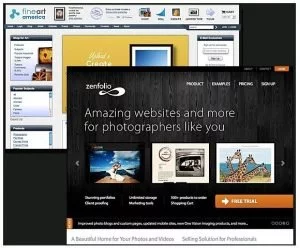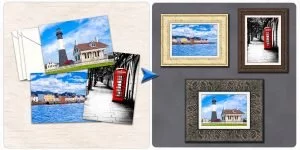Camera Gear
One question I am frequently asked is what camera do I use. The first thing I want to say is that I’m neither brand conscious nor do I believe the secret is in the camera! If you have a camera already and you want to learn to take good pictures, here are some things you might consider.
- Take a Class! I did, I found a class offered in evenings to get a better handle on the general workings of a camera. You don’t have to have an SLR either, most likely. I had a point and shoot camera at the time that allowed for some general tweaking of ISO, aperture, etc. Check with the folks at your local camera shop, college, etc. and see if there’s an adult learning program nearby. If you’re in school already, then definitely see what your school may offer.
- Get a book! You might buy one, but you may also find many available through your local library. This very much depends on the type of learner you are. I personally find in this respect I did better with hands on instruction than any of the books I read. But after getting the basics, I found books helped me much more.
- Join online sites like flickr and then look for groups where you can share your photos and get advice from others. There are a ton of very active groups on flickr, and you might even be lucky to find one with photographers near you who meet up in real life.
- Practice, practice, practice. Get out there and take photos, especially if you’re using digital. It’s a misnomer to say that digital is unlimited, i.e. unlike film, you don’t waste film with each shot. That fails to take into account the wear and tear on your camera and memory cards which have a finite number of uses. But the instantaneous effect of digital does allow you to get an idea of what did or didn’t work right after you take the photo, thus allowing you to try again on the spot. See what works, see what didn’t work, and learn from those experiences. This is the best way of learning the craft of photography in my opinion.
Now I’m going to share what I shoot with, but stick around after that for more thoughts on cameras that might suit your needs. To be clear, the links that follow are to Amazon. In the event you click through and purchase something, I get a small commission, but it doesn’t affect what you pay, and you are encouraged to shop around for your best price! It may be elsewhere.

Although a lot of the photos you’ll find in my print gallery are taken with my older Canon 20D (my first digital SLR), almost two years ago I upgraded to the Canon 50D which is still available but has been has since been superseded by the Canon EOS 60D. Amongst the many upgrades between the 20D and 50D is dust cleaning. One of the pitfalls of digital SLRs has been dust getting on the sensor which can happen anytime you swap lenses. The 50D vibrates to clean the sensor. I still had to have my sensor cleaned since then (in Mexico no less), but it’s been far less of an issue with the 50D. So my suggestion is to look for dust cleaning mechanisms on any digital SLR you’re considering.
My Collection of Lenses
The workhorses of my lenses are the first two, the 17-40mm and 24-70mm. If i had to choose two lenses to take with me, these would be it. I’d have a hard time choosing between them, though, as I swap between them frequently. I’ll save commentary on Canon L Lenses for another time. My least used lens is the 100mm Macro but it is a nice lens, I just don’t do as much macro work as I thought I would. The point is this all revolves around the type of photos you take. I tend towards the wide angle end of the spectrum, but you might like close-up work and get more use out of a long telephoto or macro lens. The lenses are not a recipe for good photos. Your choices should be dictated by the type of photography you enjoy.
Okay, so, you’ve seen my main gear, what camera should you buy? I’m not going to get into brands. You know I have Canon gear, but that’s pretty much a function of the instructor in my class having a canon and having handled it, I liked it. Now, after you start buying lenses, you start getting more locked into a brand. What I will say is you don’t necessarily need a full fledged SLR, a nice point and shoot may be enough for you, or maybe you might pick up an entry level SLR? You can also consider getting a gently used SLR to start with. Or, as when I bought my 50D, I knew it had been out long enough a new camera was surely on its way. I could have waited and paid a premium for that new camera or be happy with the huge leap over my old camera and at a better price for what was still a new camera! This is the same with any of the leading brands, they are constantly introducing new cameras with new bells and whistles. Something that is about to be replaced (or has just been replaced) may be cheaper but still a great deal for you.
Another suggestion I’ll put out there is for you to research the Micro Four Thirds cameras. These cameras have interested me a lot of late. They occupy a space between point and shoot and SLR cameras. They have done away with the prism of an SLR so they are more compact. Instead of looking directly through the lens as on an SLR, with these you are looking at a digital “live view” of what the sensor sees on the camera’s LCD. There are optional viewfinders for bright conditions, but you are still looking at a digital view. There are some that think this is the future of photography, that the prism is history. Who knows to be honest! But these hybrids still have the size of a point and shoot combined with interchangeable lenses. I have resisted the lure of buying one so far, but I suspect when it comes time to replace my point and shoot, there’s a decent chance I’ll use that as an excuse to try out a Micro Four Thirds camera.
Remember though, it’s not just about the camera, here’s an example, a photo I took with my point and shoot to (I hope) prove my point!

Research your camera choices well and get the best camera you can that fits your individual needs! Here are a couple of sites I have always looked to for reviews:
If you have any places you like to read reviews or have thoughts or questions, please feel free to speak up in the comments below!













